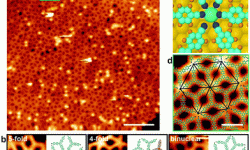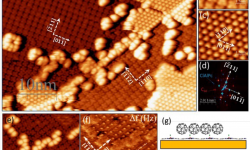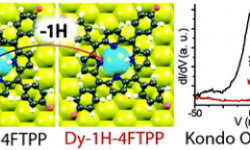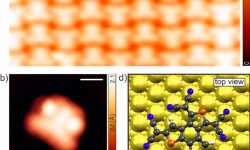Dysprosium-directed metallosupramolecular network on graphene/Ir(111) (CHEM. COMMUN. 2021)

The interest in exploiting the unique properties of lanthanides has led to the recent design of two-dimensional coordination networks incorporating f-block elements on metallic surfaces. In order to take this field to the next step of progression, it is necessary to electronically decouple these two-dimensional architectures from the metallic surface…




